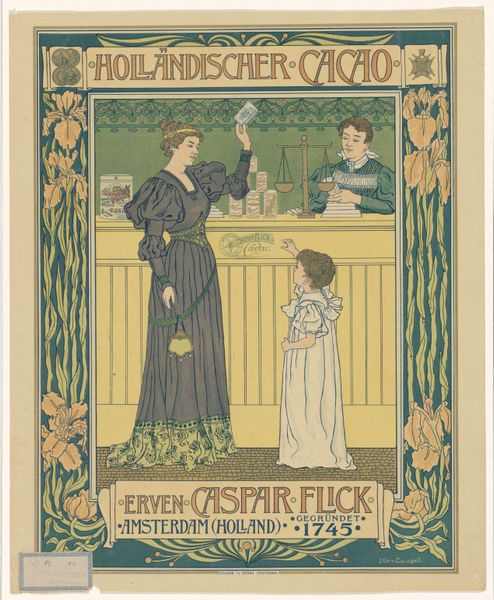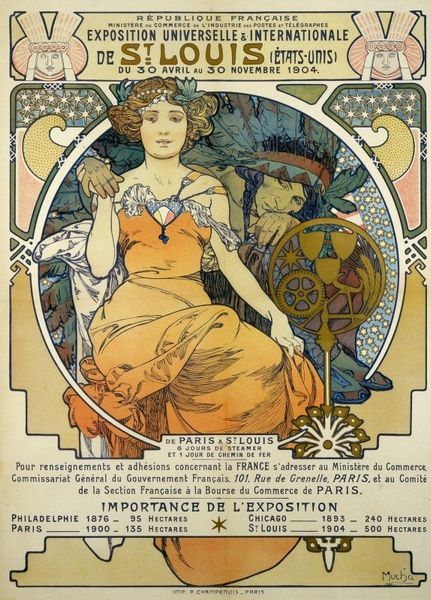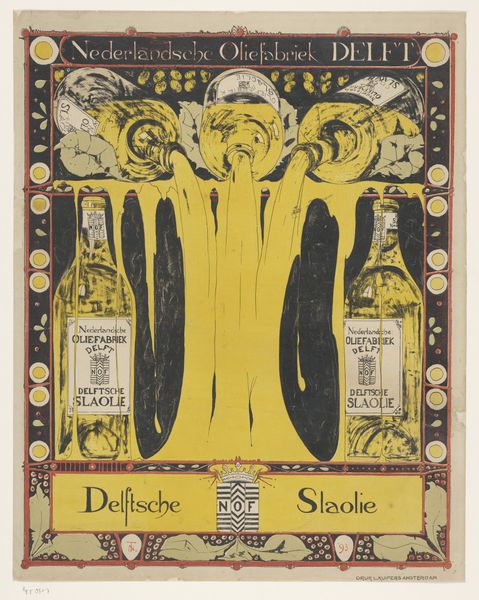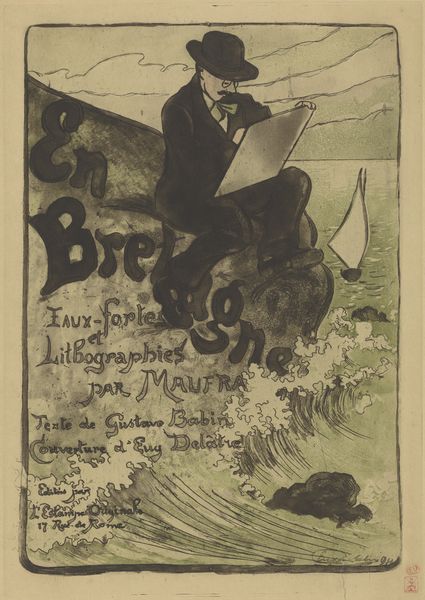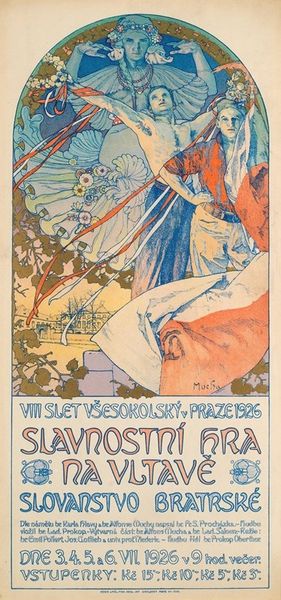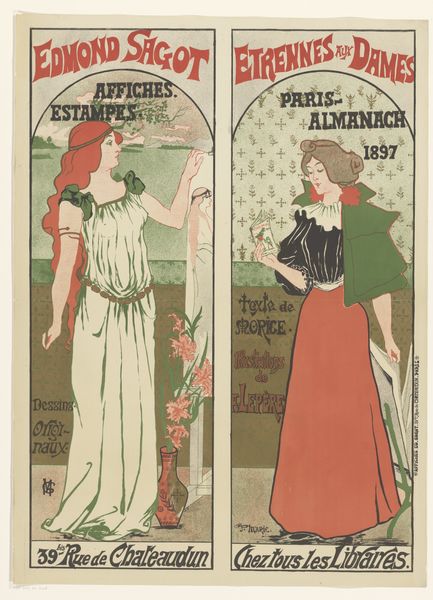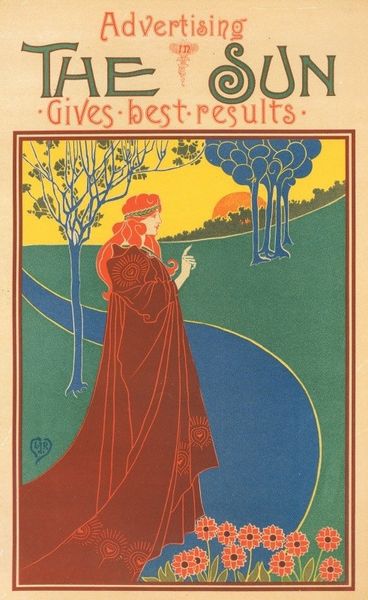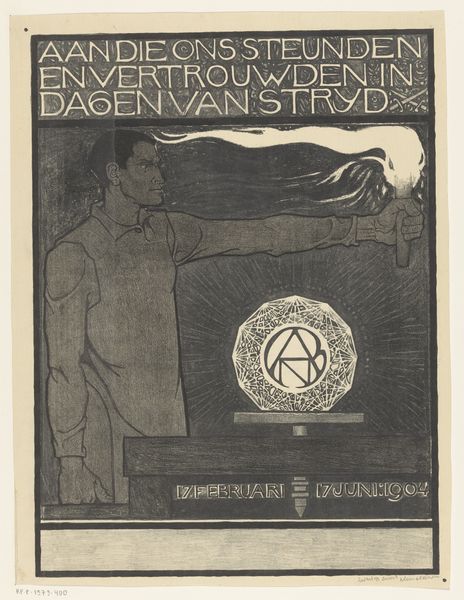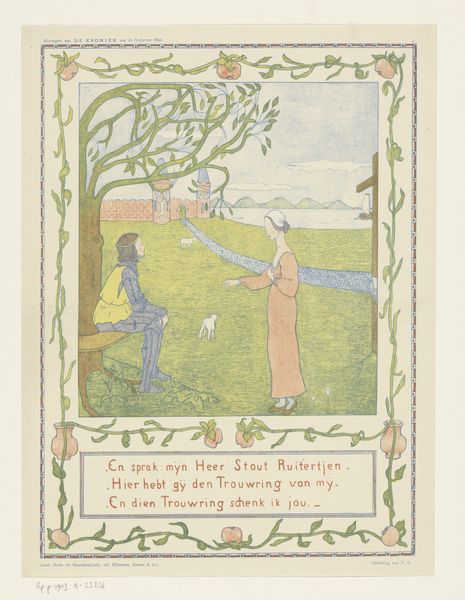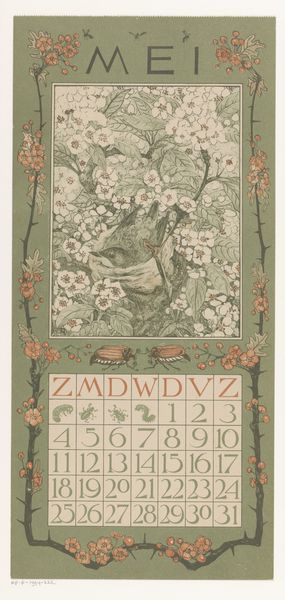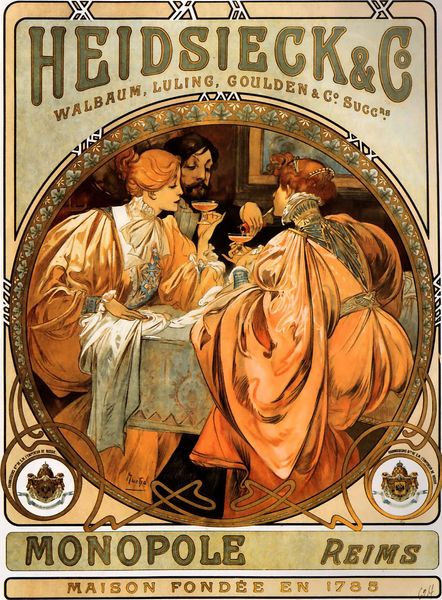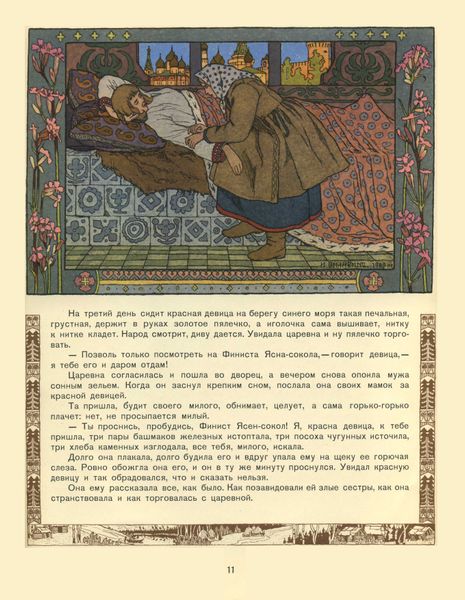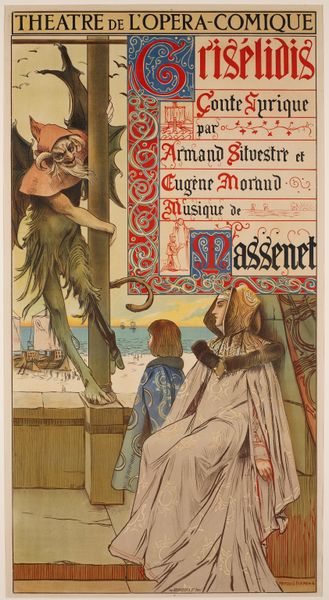
graphic-art, print, poster
#
portrait
#
graphic-art
#
art-nouveau
# print
#
book
#
poster
Dimensions: height 620 mm, width 470 mm
Copyright: Rijks Museum: Open Domain
Curator: This is an advertising poster created around 1900 by Walter Tiemann for the publishing house Hermann Seemann Nachfolger. It promotes illustrated Elzevier editions. My first thought is about how serene this poster feels. Editor: The flowing lines and muted colors really set a mood, don’t they? It almost hides the fact that its function is to be commercial, pushing product. It presents an almost dreamlike, interior state that it links with literature and education. Curator: Absolutely. Consider the woman absorbed in her book; she becomes a symbol for the transformative power of reading, almost a classical muse updated for the modern age. The book acts as a portal, a vehicle for imaginative flight. Note also the columns topped with busts receding into the background. Do these figures signify history and tradition? They are silent witnesses to the act of reading itself. Editor: I'm drawn to the materials, of course. The poster would have been mass-produced. This links these elite Elzevier editions with wider accessibility and distribution thanks to print technology and the advertising itself. Think of the paper quality, the inks used, and the printing process... the mechanization, the standardization that it both benefited from and participated in as a commodity circulated at a time of unprecedented print production. Curator: Very true, and the Art Nouveau style—those sinuous curves, the stylized rendering of natural forms—gives it a distinctive flavor. In Art Nouveau we often find idealized, often eroticized, female figures; this poster deviates, portraying its subject as an intellectual, deeply immersed in learning. She's no mere decoration. She *embodies* knowledge. Editor: Although, let's not forget, it’s an idealized vision crafted to sell us something. It offers an imagined leisure accessible, really, to very few. Even the price point advertised: 3 marks per volume. While perhaps more affordable than handcrafted illuminated books of prior centuries, that price nonetheless positioned these volumes as luxury goods aimed toward a specific sector of society that valued erudition. Curator: The poster becomes a cultural artifact, itself embodying a certain vision of art, knowledge, and social status. It reflects the values of a time that celebrated books as treasured objects, but at a time when the very nature of mass production would impact the status of the unique art object, a status undermined precisely by printing processes. Editor: Ultimately, seeing the way it links high-end craftsmanship with commercial means sheds light on our complicated relationship to consumer culture. Curator: A visual synthesis of the eternal power of learning with modern-day promotion.
Comments
No comments
Be the first to comment and join the conversation on the ultimate creative platform.
